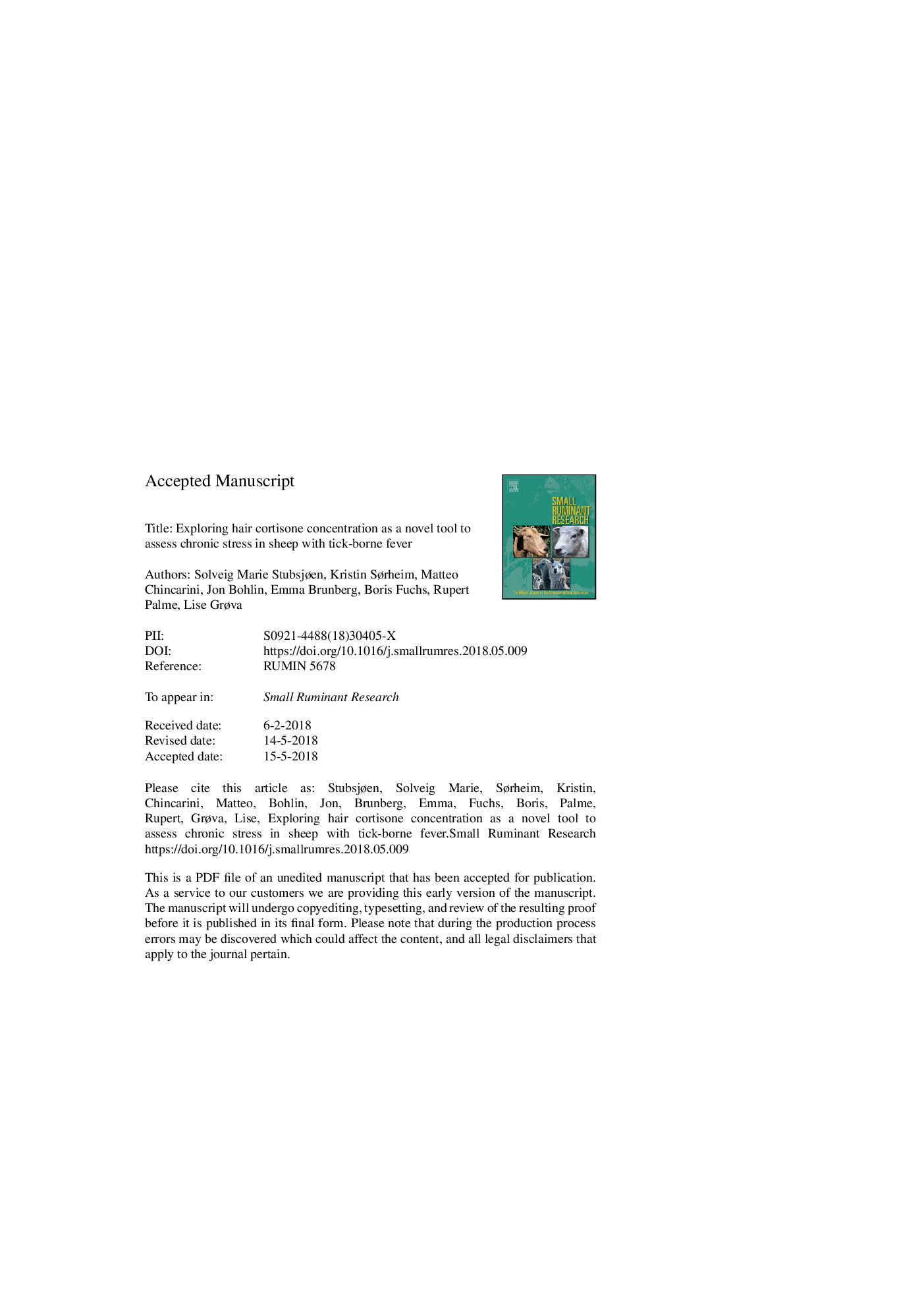| کد مقاله | کد نشریه | سال انتشار | مقاله انگلیسی | نسخه تمام متن |
|---|---|---|---|---|
| 8504188 | 1554328 | 2018 | 34 صفحه PDF | دانلود رایگان |
عنوان انگلیسی مقاله ISI
Exploring hair cortisone concentration as a novel tool to assess chronic stress in sheep with tick-borne fever
ترجمه فارسی عنوان
بررسی میزان غلظت کورتیزون موی به عنوان یک ابزار جدید برای ارزیابی استرس مزمن در گوسفند با تب تیرگی
دانلود مقاله + سفارش ترجمه
دانلود مقاله ISI انگلیسی
رایگان برای ایرانیان
کلمات کلیدی
رفاه حیوانات، استرس مزمن، گلوکوکورتیکوئیدها مو، گوسفند، تب تب،
موضوعات مرتبط
علوم زیستی و بیوفناوری
علوم کشاورزی و بیولوژیک
علوم دامی و جانورشناسی
چکیده انگلیسی
Tick-borne fever (TBF), caused by the bacterium Anaplasma phagocytophilum and transmitted by the tick Ixodes ricinus, has considerable consequences for animal welfare and economy in the sheep industry. Non-invasive, objective methods to quantify chronic stress are needed in order to evaluate the welfare impact of disease. The aim of this study was 1) to evaluate hair cortisol (HC) and hair cortisone (HCn) as biomarkers of chronic stress in sheep with TBF and 2) to test whether there was an association between the development of TBF and concentrations of HC, HCn and faecal cortisol metabolites (FCM) and body weight. The experiment took place in an area with a high prevalence of TBF, and thirty lambs were used in the study. Wool samples were collected in Week 0, in Week 3 (before turn out on homeland spring pasture), in Week 6 (before turn out on summer rangeland pasture) and at the end of the summer (Week 15). Faecal samples were collected every week (ie. Week 0-6 and Week 15). Symptoms of TBF developed in 15 lambs, of which all recovered from the disease after treatment with antibiotics. HC levels decreased progressively, and significantly, between Week 0, 3, 6 and 15 (pâ¯<â¯0.001), while HCn only decreased from Week 0 to Week 3 (pâ¯<â¯0.001) and then remained stable between Week 3-15. FCM increased between Week 0 and 5 (pâ¯=â¯0.027), and a significant association was found between increased FCM levels in Week 5 and lambs developing clinical signs of TBF (pâ¯=â¯0.022). We also found an association between lambs developing clinical signs of TBF and elevated HCn levels in Week 6 (pâ¯=â¯0.013). A slightly lower weight gain at later time points (Week 6 and 15) were found in the affected lambs compared to clinically healthy lambs. Our results indicate local production and/or metabolism of glucocorticoids in the hair follicles. This study strengthens our previous finding of a potential merit of hair cortisone as a biomarker of chronic stress in sheep.
ناشر
Database: Elsevier - ScienceDirect (ساینس دایرکت)
Journal: Small Ruminant Research - Volume 164, July 2018, Pages 110-119
Journal: Small Ruminant Research - Volume 164, July 2018, Pages 110-119
نویسندگان
Solveig Marie Stubsjøen, Kristin Sørheim, Matteo Chincarini, Jon Bohlin, Emma Brunberg, Boris Fuchs, Rupert Palme, Lise Grøva,
